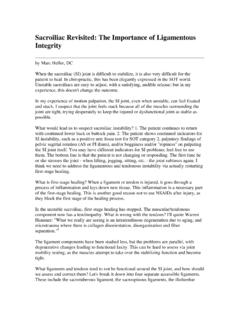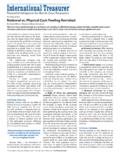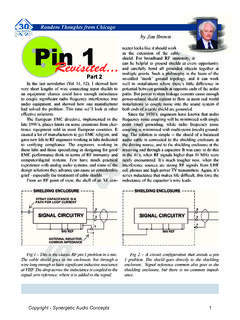Transcription of Top 10 risks in telecommunications revisited - EY
1 Top 10 risks in telecommunications revisited Mitigating threats to operators Introduction 1 Mitigating business risks | How are operators faring? 2 Our assessment of operator responses to risks 3 Operator mitigation strategies per risk | Summary 4 The top 10 risks in telecommunications : mitigating threats to operators 61. Failure to shift the business model from minutes to bytes 72. Disengagement from the changing customer mindset 83. Lack of confidence in return on investment 94.
2 Insufficient information to turn demand into value 105. Lack of regulatory certainty on new market structures 116. Failure to capitalize on new forms of connectivity 127. Poorly formulated M&A and partnership strategy 138. Failure to define new business metrics 149. Lack of privacy, security and resilience 1510. Lack of organizational flexibility 16 Contacts 17 Contents3 Mitigating threats to operatorsTop 10 business risks for telecommunications in 2012A more pressing greenagenda Concentration of equipmentvendors Difficulties in managing debtand cashEvolving service cannibalizationscenarios Below the radarDisengagementfrom the changingcustomer mindsetLack ofconfidence in return on investmentLack of regulatorycertainty on newmarket structuresPrivacy.
3 Security andresiliencePoorlyformulat ed M&Aand strategicpartnershipsFailure to definenew businessmetricsFailure tocapitalize on newty pes of connectivityInsufficient information toturn demand into valueFailure to shift thebusiness modelfrom minutes to bytesLack of or ganizationalflexibility ComplianceFinancialStrategicOperationsTo p 10 risks in telecommunications 2012 was part of our ongoing series of studies designed to pinpoint the most critical risk issues, analyze the sector s evolving responses and highlight elements of emerging leading last year s risk report, we outlined obstacles that operators must avoid if they are to capitalize on new opportunities. In an industry environment where stakeholders are more demanding than ever and where customer expectations continue to rise, it is imperative that operators develop specific responses to a range of threats.
4 telecommunications continues to face a series of challenges, whether macroeconomic in nature or allied to long-term structural pressures. Even so, the prognosis for the industry is better than it has been for some time. Greater regulatory backing for infrastructure investment coupled with new demands from customers and enterprises means that operators are in a strong position to extend their service propositions into new areas. In Top 10 risks in telecommunications revisited : mitigating threats to operators, we delve into the measures we believe operators can adopt, not only to fend off the many pressures facing their organizations, but also to make the most of an expanding horizon of service business risksHow are operators faring?
5 In our conversations with senior management, we have found that operators are already taking steps to meet sector risks . Concerns around business model overhaul, disengagement from the customer mindset and return on investment are, and will remain, leadership priorities. Yet this is not to suggest that such risks are diminishing. The challenge in these instances now becomes how best to accelerate existing moves and pursue bolder responses. In the case of lack of confidence on return on investment, for example, network sharing is well-established, and operators can look to more dynamic forms of infrastructure rationalization such as Radio Access Network (RAN) , risks that have recently entered the top 10 risks for telecommunications , such as Insufficient information to turn demand into value and Failure to define new business metrics, remain areas where mitigation strategies are only just emerging.
6 Here, the challenge is to formulate responses and make them leadership priorities. Only then can management attention turn to execution 10 risks in telecommunications revisited2 Mitigating threats to operators3In Figure 1, we highlight how operators are coping with each of the risks in the top 10. This is derived from our interactions with leading operators themselves, as well as from our understanding of the risks themselves and how they are likely to evolve over the next 12 across the three categories of operator mitigation strategy assessment, a number of conclusions can be drawn: Leading sector risks (No. 1, No. 2 and No. 3) are already being dealt with as a leadership priority through well-established strategies.
7 Other risks represent more recent pain points. While responses in these areas are often nascent, management focus varies in intensity (No. 6 and No. 8).Figure 1: Operator mitigation strategy assessmentOur assessment of operator responses to risksAs such, we have evaluated risk mitigation strategies by assessing the maturity of current responses as well as how high they rank as leadership priorities. We also consider whether these risks are likely to become more pronounced in 2013 in view of the success of existing mitigation strategies and external factors such as regulatory demands, customer needs and competitor actions. The prospect for risks increasing or decreasing in magnitude over the next 12 months varies substantially.
8 We see regulatory threats (No. 5) decreasing, while risks emanating from a lack of business intelligence ( ) are seen for risks where operators are prioritizing responses notably for Failure to shift the business model from minutes to bytes and Disengagement from the changing customer mindset factors informing the risks , particular competitor actions, are changing continuously. As such, operators must maintain high levels of focus as they execute their strategies. Disengagement from the changing customer mindsetLack of confidence on return on investmentInsufficient Information to turn demand into valueLack of regulatory certainity on new market structuresFailure to capitalize on new forms of connectivityPoorly managed M&A and strategic partnershipsFailure to define new business metricsLack of privacy.
9 Security and resilienceLack of organizational flexibilityHighLowMitigating strategy maturityMitigating strategy as leadership priorityLikelihood of risk increasing in 201310987654321 Failure to shift the business model from minutes to bytesKeyTop 10 risks in telecommunications revisited12345 Failure to shift the business model from minutes to bytessee page 7see page 8see page 9see page 10see page 11 Disengagement from the changing customer mindsetLack of confidence in return on investmentInsufficient information to turn demand into valueLack of regulatory certainty on new market structures Revisiting pricing approaches Adapting the business model to support new roles in the value chain Improving customer communications and maximizing brand trust Adopting the OTT mindset in new service areas Improving segmentation to isolate new customer demands Extracting more value from suppliers Reducing network duplication Educating the market on a shifting network landscape Taking a holistic approach to business intelligence improvements Taking a lead on predictive analytics Turning big data into a new revenue stream Engaging better with policymakers in core service areas Managing compliance demands in new service areas Maintaining workable stances on net neutralitySummaryOperator mitigation strategies per risk4 Top 10 risks in telecommunications revisitedMitigating threats
10 To operators678910see page 12see page 13see page 14see page 15see page 16 Failure to capitalize on new forms of connectivityPoorly formulated M&A and partnership strategyFailure to define new business metricsLack of privacy, security and resilienceLack of organizational flexibility Building capability and credibility in M2M Balancing unique selling points and partnering needs in the cloud Reviewing core competencies as a precursor to acquisitions and divestments Providing clarity on the benefits of consolidation Striking more productive partnerships with other industry players Overhauling customer-related metrics Looking beyond EBITDA to describe new revenue streams Focusing on new types of coverage and penetration metrics Outlining specific areas of responsibility in data retention and piracy Prioritizing robust network infrastructure Leveraging trusted brands to launch new security-centric

















